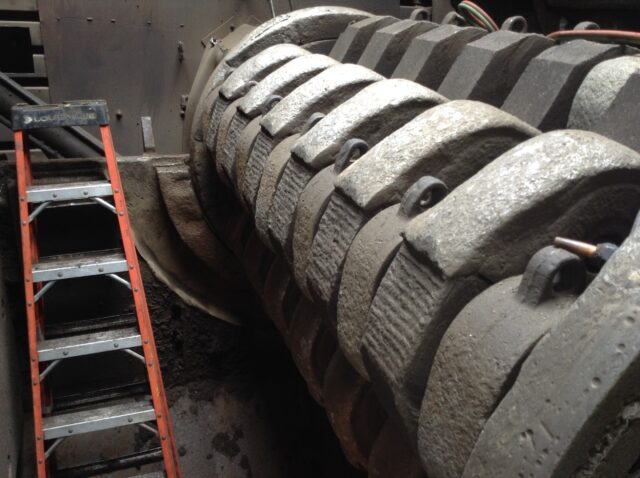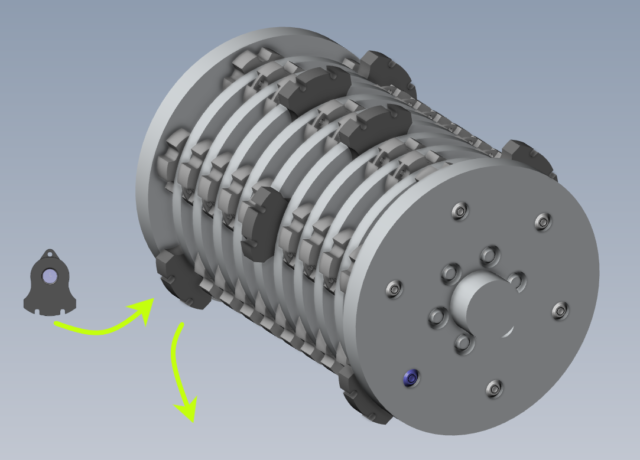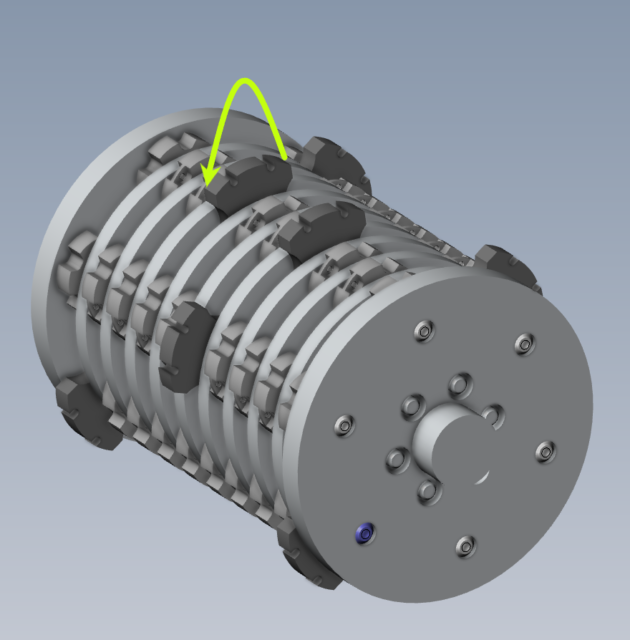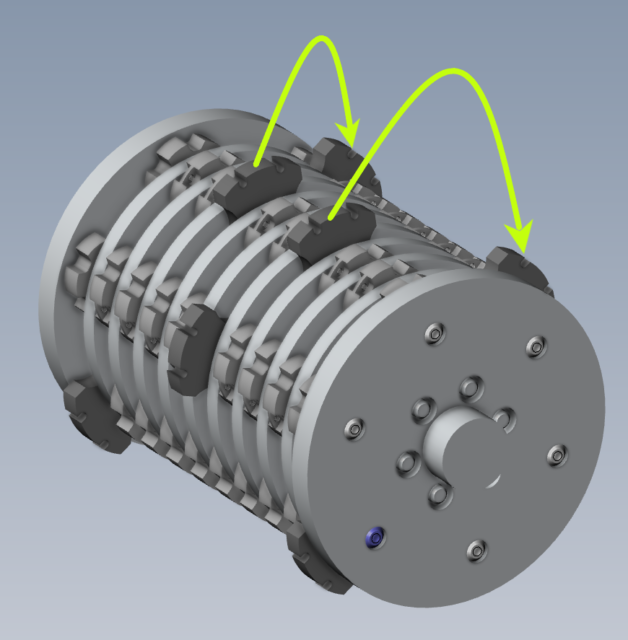
When do you know it’s time to change your scrap metal shredder hammers? What does it mean to “change” hammers?
Changing hammers refers to both replacing hammers with new, as well as “flipping” or “turning” hammers to another side to expose a fresh leading edge, or rotating hammers to a new position on the rotor.
Change — swap new for used casting

Flip — turn and change edges to present a fresh edge

Rotate — moving to a new shaft and slot position

Rotating might involve moving from the middle high wear zone towards the side wall position.
Whatever you do, you must be sure the rotor is balanced with relatively equal weight of hammers & pin protectors for a smooth rotation at speed. Your bearings and drive line will thank you for it.
Symptoms that indicate you need to change hammers
Material will no longer feed into the shredder – Feed stock no longer wants to draw in or your feeding device fights to push material into the shredder.
The size of shredded material leaving the mill gets smaller – Here the material is stacking up against the grates because it does not want to shred. Your hammers start to wastefully grind down material struggling to leave the grate circle. The crew at your picking station notices the smaller ‘over-grind’ material. They know hammer wear is high and that production might end early.
Motor temperatures start to climb – Motor winding temps, exhaust air temps, liquid rheostat temps, or engine cooling water run hotter. Inefficient shredding means wasted energy from your drive system. The wasted electrical amps or fuel shows up from an overworked motor or engine.
Worn hammers mean inefficient shredding
The distance between your hammers, grates, and intake anvil or cutter bar are key factors in the mill’s ability to shred effectively. Changing hammers helps restore the clearance geometry and gives you fresh edges to work with.
Managing hammer maintenance is also related to production hours and work shifts. Reality forces you to match production shifts to hammer life. The entire hammer configuration plays a role. Rotor configuration involves:
- The number of hammers in the shredder
- Hammer size (width, length, mass)
- Pattern of working hammers to pin protectors or rotor cap covers
- Strategies for rotating hammers to extend life
Every shredder machine is different, and every seasoned operator has their own recipe. Let your production team find their own sweet spot of hammer maintenance. To find the best solutions for your machine, feedstock, and operating, style, measure, analyze, and benchmark shredder efficiencies.
Need to replace your shredder’s hammers? Consider K2 Castings.
As a wear parts supplier, we know which parts to choose for just about any metal shredder on the market today. We know the manufacturers, the best ways to ship no matter where you’re located, and which hammer will offer you the best shredding success for your feedstock.
Complete our RFQ or call 603-866-0423.



